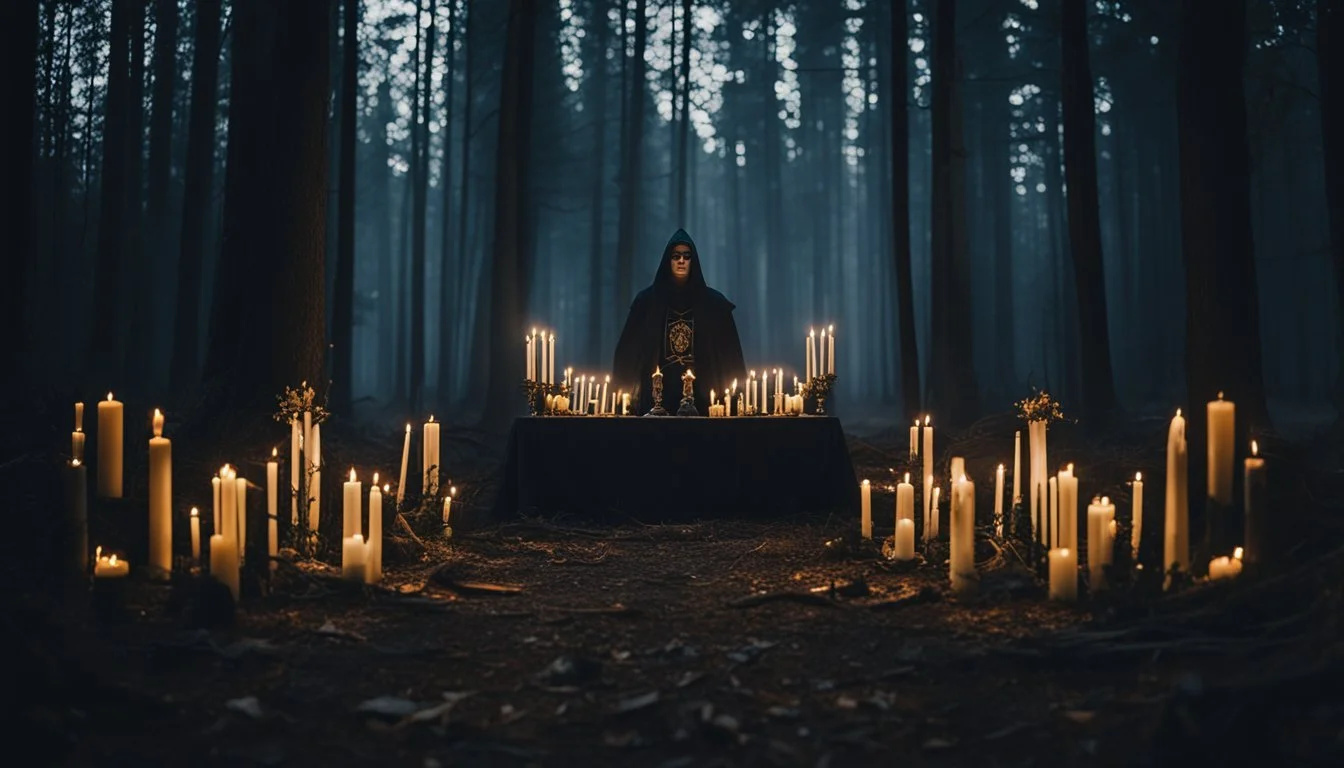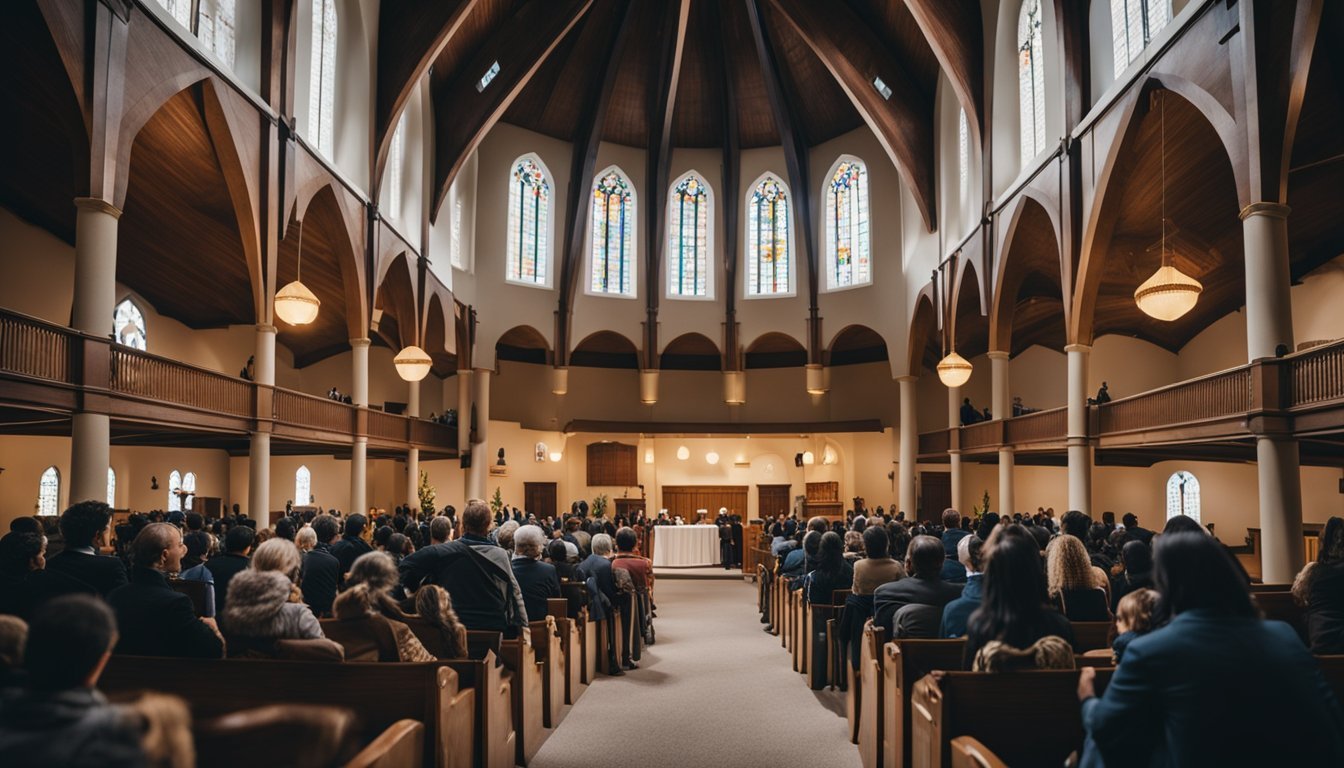6 True Crime Documentaries About Seventh-day Adventists
Unveiling Hidden Truths
True crime documentaries often captivate audiences with their detailed explorations of real-life events, offering insights into criminal cases and the human condition. Several documentaries have focused on cases involving members of the Seventh-day Adventist Church, shedding light on both the faith's community and the dramatic incidents that have occurred within it.
These documentaries not only provide a closer look at the individuals involved but also examine the broader implications of such stories on the understanding of faith-based groups in society. By exploring these gripping narratives, viewers can gain a nuanced perspective on the complexities of religious identities and the extraordinary stories that emerge from them.
1) Murder in the Family: The Lundgren Cult
Jeffrey Lundgren led a Latter Day Saint movement-based cult that operated in Kirtland, Ohio. In 1989, he was responsible for the brutal murder of a family of five members, the Averys.
Lundgren broke away from the Reorganized Church of Jesus Christ of Latter Day Saints after allegations of embezzlement. He convinced his followers that he was a prophet and relocated them to a farm outside Kirtland.
Lundgren interpreted scripture using his own method called "chiastic," entailing the search for recurring patterns in texts. His manipulative approach helped him maintain control over his followers.
The murder took place on April 17, 1989. Lundgren and his cult members bound and executed the Avery family, making this one of the most shocking cult-related crimes.
For more information about the Lundgren cult and Jeffrey Lundgren's crimes, visit Jeffrey Lundgren on Wikipedia (2024).
2) Faith Under Fire: The Robert Spangler Case
"Faith Under Fire: The Robert Spangler Case" (2013) recounts a gripping true crime story involving Robert Spangler, a man who shocked his community with heinous acts of violence.
Spangler was a member of the Seventh-day Adventist Church and committed multiple murders over several decades, targeting family members.
The case sheds light on the darker aspects of human nature and how faith communities respond to such crises.
Spangler's apparent normalcy within his religious community contrasted sharply with his hidden motivations and actions.
The documentary details the investigation and eventual capture of Spangler, who confessed to the murders before his death in prison.
The film serves as both a chilling true crime story and a study in the complexities of identity and belief.
Further Reading: Faith Under Fire: The Robert Spangler Case (2013) on IMDb.
3) The Trail of Faith and Death: The Martin Family Murders
The disappearance of the Martin family in 1958 remains one of Oregon's most perplexing cold cases. Kenneth Martin, his wife Barbara, and their three daughters left their home in Portland to gather greenery for Christmas decorations.
They were never seen again.
The family embarked on their journey in a Ford station wagon, heading toward the Columbia River Gorge. Investigation efforts uncovered scant evidence, with little progress made despite extensive searches.
The case attracted wide public attention but provided few concrete leads.
Reports suggest their Seventh-day Adventist faith played no direct role in their disappearance. However, the family's strong community ties added layers of interest and complexity to the ongoing investigation. The search for the Martin family included thorough examinations of surrounding areas, but no definitive answers emerged.
Decades later, the case captivates true crime enthusiasts and investigators alike. It highlights the challenges in resolving such deeply enigmatic crimes. The story of the Martin family endures as a sobering reminder of the uncertainties that can haunt even the most devoted families.
More information can be found on Wikipedia or relevant true crime databases.
4) A Trust Betrayed: The Story of David Thoreson (2024)
The documentary A Trust Betrayed sheds light on the tragic story of David Thoreson and the contamination issues at Camp Lejeune. Thoreson, a member of the Seventh-day Adventist Church, was stationed at the Marine Corps base during the height of its water contamination crisis.
The film explores how Thoreson and his family were affected by the toxic water supply, which contained harmful chemicals. Being a part of a faith community that emphasizes health and wellness, Thoreson's plight is particularly poignant.
Documents uncovered in the documentary highlight the negligence of military officials who failed to address the contamination issue promptly. Thoreson's story is emblematic of the larger tragedy faced by many service members at Camp Lejeune.
Trust Betrayed combines interviews and archival footage to present a comprehensive view of the environmental disaster. Thoreson's personal story is interwoven with broader narratives of faith, betrayal, and the fight for justice.
For more details, you can refer to the Wikipedia entry on the film.
5) Religious Veil: The Murders of Benjamin and Erika Sifrit
Benjamin and Erika Sifrit, both with backgrounds suggesting a religious upbringing, shocked the public with their gruesome crimes. In 2002, the couple murdered and dismembered two tourists, Joshua Ford and Martha Crutchley, in Ocean City, Maryland.
The investigation into the Sifrits began when they were caught during a burglary at a Hooter's restaurant. Their capture led to the discovery of evidence linking them to the murders. Benjamin was convicted of second-degree murder for Crutchley's death, while Erika was convicted of both murders.
The case drew significant media attention, highlighting the seemingly paradoxical nature of their religious affiliations and violent actions. The documentary explores how their faith may have clashed with their criminal behavior, adding layers to the complex narrative of their lives and murders.
For more information on the documentary, visit the Wikipedia page.
6) False Prophets: The Path of Jeffrey Lundgren
Jeffrey Lundgren was a self-proclaimed prophet and cult leader associated with a splinter group that originated within the Latter Day Saint movement.
He interpreted scripture using an unconventional method he referred to as "chiastic," which involved finding patterns in text.
Lundgren's leadership took a dark turn when he led his followers to commit the murders of Dennis Avery, his wife, and their three daughters in Kirtland, Ohio, on April 17, 1989.
The family had begun doubting Lundgren's claims of prophethood, leading to their execution.
Lundgren's actions culminated in his trial and eventual execution in 2006, bringing an end to his violent legacy.
False Prophets: The Path of Jeffrey Lundgren outlines his rise and fall, delving into the events leading up to the massacre and the cult's disintegration.
More information on Jeffrey Lundgren's crimes on Wikipedia.
History and Beliefs of Seventh-day Adventists
Seventh-day Adventism began in the mid-19th century with roots in the Millerite movement. Core beliefs revolve around the observance of the Sabbath on Saturday and a unique eschatological perspective.
Origins and Founding
The origins of Seventh-day Adventism can be traced back to the Millerite movement of the 1840s. William Miller, a Baptist preacher, predicted the Second Coming of Jesus Christ, which he expected to occur in 1844. When this event did not happen, it led to what is known as the "Great Disappointment."
Out of this disappointment, a group of Millerites continued to study biblical prophecies. Ellen G. White emerged as a significant figure in this movement. Claimed visions and prophecies that were instrumental in shaping Adventist doctrine. The Seventh-day Adventist Church was officially founded in 1863. By a small group of believers in Battle Creek, Michigan.
Core Doctrines
A central belief of Seventh-day Adventists is the observance of the Sabbath on Saturday. As they consider it the true seventh day of the week. This practice aligns with their literal interpretation of the Genesis creation narrative.
Another key doctrine is the Investigative Judgment, which began in 1844. They believe Jesus entered a heavenly sanctuary. To review the lives of believers and assess their eligibility for salvation.
Adventists also emphasize health and diet, following guidelines that encourage vegetarianism and abstention from alcohol and tobacco. Furthermore, the imminent return of Jesus Christ is a core belief. Conditioning much of their eschatological outlook and evangelistic efforts.
True Crime and Religious Communities
True crime documentaries often shed light on the intricate relationship between faith and legal matters, illuminating high-profile cases involving religious groups. These stories frequently highlight how religious beliefs and communal ties can influence legal proceedings and public perception.
Impact of Faith on Legal Cases
Religious communities can play a significant role in the legal process. Faith beliefs can impact both the defense and prosecution strategies. For example, in cases involving crimes within tight-knit religious groups, faith may provide moral justifications or defenses perceived as mitigating factors.
In some cases, communal religious support can affect jury perceptions, often leading to complex emotional and ethical verdicts. Religious leaders can also become pivotal witnesses, adding another layer of complexity to the trial.
Seventh-day Adventist communities, among others, have sometimes faced legal scrutiny due to their unique beliefs and lifestyles. Documentaries often explore how their religious convictions and communal bonds influence the outcomes of legal battles.
High-Profile Cases Involving Religious Groups
Several notable true crime cases involve religious communities, often drawing significant media attention. Murder Among the Mormons explores bomb attacks linked to Mormon document forgeries. Similarly, cases within Seventh-day Adventist communities reveal how crime and faith intersect.
These high-profile cases tend to focus on the interplay between devout religious practices and criminal actions. The tension between upholding religious values and addressing criminal behavior provides a rich narrative.
Documentaries like Making a Murderer or Keep Sweet: Pray and Obey highlight how individuals within religious groups navigate criminal accusations, often showing the profound impact of their faith on public and legal perceptions.
Portrayal of Seventh-day Adventists in Media
The portrayal of Seventh-day Adventists in media has significant implications on public perception, influencing how this religious group is viewed. Both positive and negative depictions have been shaped by various documentaries and films over the years.
Media Influence on Public Perception
Media plays a pivotal role in shaping how Seventh-day Adventists are perceived by the public. Documentaries like Netflix’s "Live to 100: Secrets of the Blue Zones" highlight the longevity and healthy lifestyles of Adventists in Loma Linda, California. These depictions showcase the community's emphasis on health and wellness. Positive portrayals can attract interest and respect, fostering a more nuanced understanding of their beliefs and practices.
Conversely, negative portrayals in certain true crime documentaries can create a more critical view. These shows often focus on extreme cases, skewing public perception by not representing the community's broad spectrum. Misleading or sensationalized content can perpetuate stereotypes and bias, impacting the community's reputation unjustly.
Previous True Crime Documentaries
Previous true crime documentaries have delved into controversies involving Seventh-day Adventists. While few in number, these documentaries often focus on high-profile cases. For example, some programs have examined allegations of misconduct within isolated Adventist groups, painting a picture of intrigue and secrecy.
These films tend to emphasize sensational aspects, drawing viewers with dramatic narratives. They can sometimes overshadow the everyday reality of the majority of Adventists, who live by the principles of their faith without notoriety. Balancing these portrayals with more everyday representations could aid in a more comprehensive understanding of the community.
By examining these media representations, one can see the dual impact they have on shaping public opinion, either fostering respect and curiosity or perpetuating misunderstandings.








